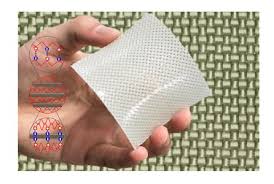
Breaking News
 Who Really Owns America (It's Not Who You Think)
Who Really Owns America (It's Not Who You Think)
 Canada Surrenders Control Of Future Health Crises To WHO With 'Pandemic Agreement': Report
Canada Surrenders Control Of Future Health Crises To WHO With 'Pandemic Agreement': Report
 Retina e-paper promises screens 'visually indistinguishable from reality'
Retina e-paper promises screens 'visually indistinguishable from reality'
 Unearthed photos of 'Egypt's Area 51' expose underground complex sealed off...
Unearthed photos of 'Egypt's Area 51' expose underground complex sealed off...
Top Tech News
 Future of Satellite of Direct to Cellphone
Future of Satellite of Direct to Cellphone
 Amazon goes nuclear with new modular reactor plant
Amazon goes nuclear with new modular reactor plant
 China Is Making 800-Mile EV Batteries. Here's Why America Can't Have Them
China Is Making 800-Mile EV Batteries. Here's Why America Can't Have Them
 China Innovates: Transforming Sand into Paper
China Innovates: Transforming Sand into Paper
 Millions Of America's Teens Are Being Seduced By AI Chatbots
Millions Of America's Teens Are Being Seduced By AI Chatbots
 Transhumanist Scientists Create Embryos From Skin Cells And Sperm
Transhumanist Scientists Create Embryos From Skin Cells And Sperm
 You've Never Seen Tech Like This
You've Never Seen Tech Like This
 Sodium-ion battery breakthrough: CATL's latest innovation allows for 300 mile EVs
Sodium-ion battery breakthrough: CATL's latest innovation allows for 300 mile EVs
 Defending Against Strained Grids, Army To Power US Bases With Micro-Nuke Reactors
Defending Against Strained Grids, Army To Power US Bases With Micro-Nuke Reactors
Fiber-reinforced hydrogel is 5 times stronger than steel

Hydrogels have shown significant potential in everything from wound dressings to soft robots, but their applications have been limited from their lack of toughness – until now. A team of scientists at Hokkaido University have developed a new set of hydrogel composites or "fiber-reinforced soft composites" that combine hydrogels with woven fiber fabric to create a material that is five times stronger than carbon steel.
Composite materials have been around for millennia and the principle is very simple. A very soft substance like mud can be made strong enough to make bricks by adding straw as a tempering material. The same applies to adding crushed pottery to brick, seashells fragments to ceramic, or glass fiber to plastic.
The latter is very similar to the fiber-reinforced hydrogel. Hydrogels are made of hydrophilic polymer chains that absorb up to 90 percent water. They aren't very strong or durable, but by adding glass tiny fibers the researchers created a tough, bendable, stretchable material.
Scanning Electron Microscopy (SEM) images of the fiber-reinforced hydrogels (Credit: Hokkaido University)

 SpaceX Heat Shield and Starship Mass Production
SpaceX Heat Shield and Starship Mass Production


